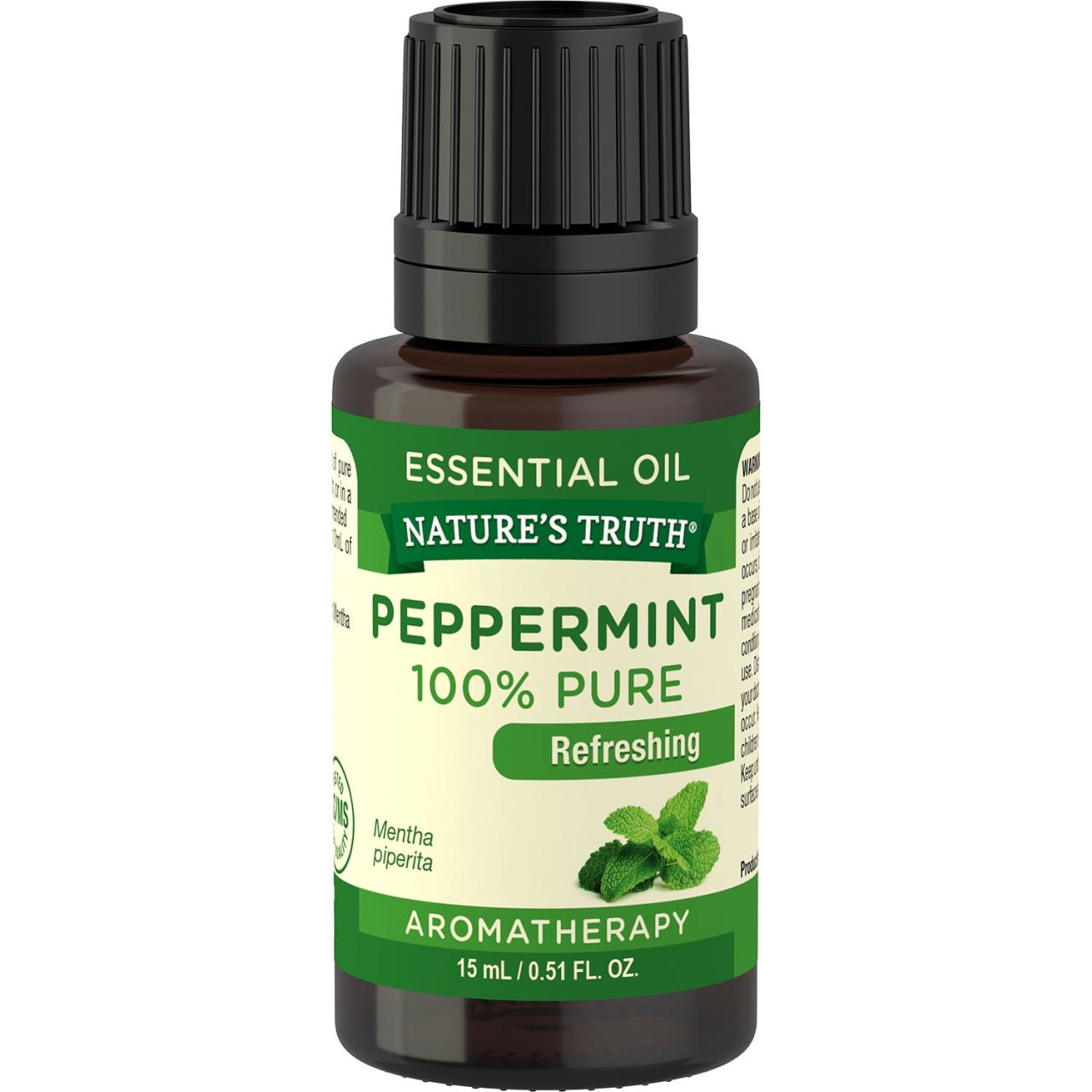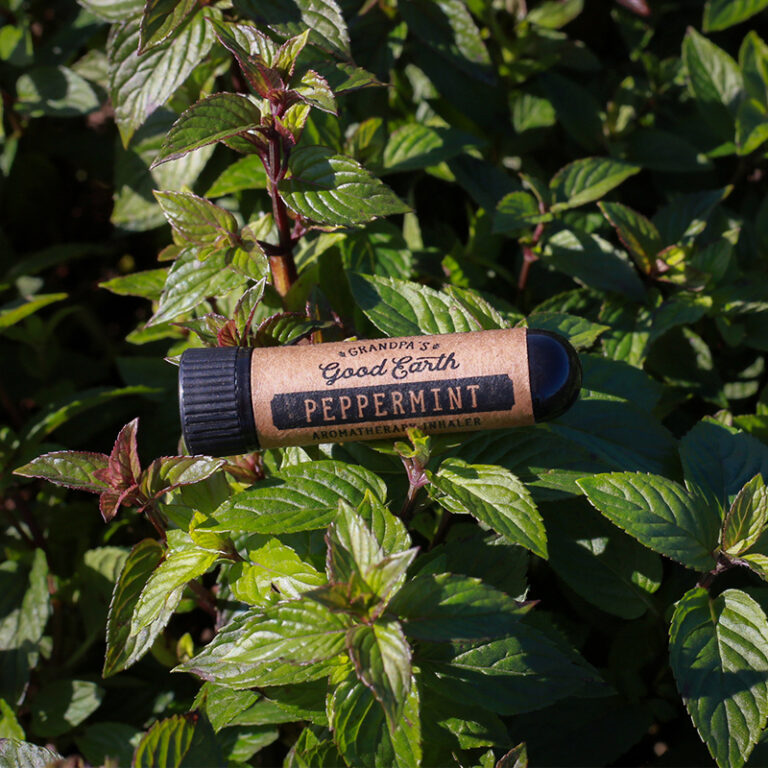Prepare to delve into the enchanting world of peppermint aromatherapy, where the invigorating scent of peppermint unfolds a symphony of therapeutic benefits. From alleviating stress to promoting digestion, this ancient practice has stood the test of time, offering a natural path to well-being.
Peppermint essential oil, extracted through meticulous processes, boasts a rich chemical composition that empowers it with remarkable healing properties. Its versatility extends from aromatherapy diffusers to topical applications, making it a versatile tool for both physical and emotional rejuvenation.
Peppermint Aromatherapy

Peppermint aromatherapy, harnessing the invigorating and therapeutic properties of peppermint essential oil, offers a multitude of benefits for both physical and emotional well-being. Its refreshing and stimulating aroma has been utilized for centuries in various applications, ranging from promoting relaxation to alleviating ailments.
Therapeutic Benefits of Peppermint Aromatherapy
- Invigorating and Uplifting:Peppermint’s invigorating aroma is known to stimulate the mind and body, promoting alertness and focus. It can help combat fatigue, improve concentration, and enhance cognitive function.
- Stress and Anxiety Relief:The calming and soothing effects of peppermint aromatherapy can help alleviate stress and anxiety. It promotes relaxation, reduces nervous tension, and creates a sense of tranquility.
- Digestive Aid:Peppermint has been traditionally used to aid digestion and relieve gastrointestinal discomfort. Its carminative properties help reduce gas and bloating, while its antispasmodic effects can soothe muscle spasms in the digestive tract.
- Headache Relief:Peppermint’s analgesic and cooling properties can help relieve headaches and migraines. Applying peppermint essential oil to the temples or inhaling its vapors can provide soothing and pain-relieving effects.
- Nausea and Motion Sickness:Peppermint aromatherapy can help alleviate nausea and motion sickness. Its antiemetic properties can reduce stomach upset and calm the digestive system, providing relief from these uncomfortable conditions.
Uses of Peppermint Aromatherapy
Peppermint aromatherapy can be incorporated into various practices for its therapeutic benefits:
- Diffusion:Diffusing peppermint essential oil in a room can create a refreshing and invigorating atmosphere, promoting alertness and reducing stress.
- Inhalation:Inhaling peppermint essential oil directly from a bottle or using a diffuser can provide quick relief from headaches, nausea, and congestion.
- Topical Application:Diluting peppermint essential oil in a carrier oil and applying it to the skin can help soothe muscle pain, headaches, and digestive discomfort.
- Bath:Adding a few drops of peppermint essential oil to a warm bath can create a relaxing and rejuvenating experience, promoting stress relief and muscle relaxation.
- Massage:Incorporating peppermint essential oil into a massage blend can provide invigorating and soothing effects, promoting circulation and reducing muscle tension.
Potential Risks and Precautions
While peppermint aromatherapy is generally safe, there are some potential risks and precautions to consider:
- Skin Irritation:Peppermint essential oil can cause skin irritation in some individuals. It is recommended to dilute the oil in a carrier oil before applying it to the skin.
- Pregnancy and Breastfeeding:The use of peppermint aromatherapy during pregnancy and breastfeeding is not recommended due to limited research on its safety.
- Interactions with Medications:Peppermint essential oil may interact with certain medications, such as blood thinners and diabetes medications. Consult with a healthcare professional before using peppermint aromatherapy if you are taking any medications.
- Ingestion:Ingesting peppermint essential oil can be toxic. It should only be used for inhalation or topical application.
Overall, peppermint aromatherapy offers a range of therapeutic benefits for physical and emotional well-being. By incorporating it into various practices, individuals can harness the invigorating and calming properties of peppermint essential oil to promote relaxation, alleviate ailments, and enhance overall health and well-being.
Peppermint Essential Oil
Peppermint essential oil, a natural extract from the peppermint plant, is renowned for its invigorating aroma and therapeutic properties. Its extraction process involves meticulous steps to capture the essence of this aromatic herb.
Extraction Process
Peppermint essential oil is primarily extracted through steam distillation, a technique that harnesses the power of heat and water vapor. Fresh peppermint leaves are placed in a distillation apparatus, where steam is passed through them. The steam carries the volatile compounds, including essential oils, into a condenser, where they are cooled and collected as a liquid.
This delicate process preserves the delicate chemical composition of peppermint essential oil, ensuring its therapeutic benefits remain intact.
Chemical Composition and Properties
Peppermint essential oil is a complex blend of over 150 chemical compounds, with menthol being its primary constituent. Menthol contributes to its characteristic cooling and stimulating effects. Other key compounds include menthone, menthyl acetate, and limonene, each contributing to its unique aroma and therapeutic properties.
Peppermint essential oil exhibits a wide range of properties, including:
- Antiseptic and antimicrobial
- Anti-inflammatory
- Analgesic (pain-relieving)
- Stimulating
- Expectorant
Sustainability and Ethical Considerations
As the demand for peppermint essential oil grows, it is crucial to prioritize sustainable and ethical practices in its production. Peppermint plants can be cultivated organically, reducing the use of synthetic pesticides and fertilizers. Additionally, responsible sourcing practices ensure fair compensation for farmers and protect the environment.
By embracing sustainable and ethical approaches, we can preserve the natural resources used in peppermint essential oil production and support the livelihoods of those involved in its cultivation.
Peppermint in Traditional Medicine and Folklore

Peppermint has a rich history of medicinal and cultural significance across various cultures worldwide. Its therapeutic properties have been recognized for centuries, leading to its incorporation into traditional healing practices and folklore.Peppermint was highly valued in ancient Greece, where it was believed to promote digestion, relieve headaches, and enhance memory.
In traditional Chinese medicine, it was used to treat respiratory ailments, digestive issues, and menstrual cramps. Native American tribes also utilized peppermint for its medicinal properties, employing it to alleviate stomach upset, nausea, and headaches.
Scientific Evidence
Modern scientific research has provided some support for the traditional uses of peppermint. Studies have shown that peppermint oil may possess antispasmodic, antimicrobial, and analgesic effects. It has been found to be effective in reducing symptoms of irritable bowel syndrome, such as abdominal pain and cramping.
Additionally, peppermint oil has demonstrated promise in alleviating tension headaches and improving cognitive function.
Peppermint in Aromatherapy Products

Peppermint essential oil is a versatile ingredient commonly used in various aromatherapy products. These products offer diverse benefits, ranging from invigorating the mind to alleviating physical discomfort. Understanding the different types of aromatherapy products and their applications can help you select the most suitable option for your specific needs.
Diffusers
Diffusers disperse essential oils into the air, creating an aromatic atmosphere. Peppermint oil in diffusers can:
- Promote alertness and concentration
- Reduce stress and anxiety
- Improve air quality and reduce odors
Inhalers
Inhalers provide a convenient way to inhale concentrated essential oil vapors. Peppermint inhalers can:
- Relieve nasal congestion
- Clear the sinuses
- Reduce headaches and migraines
Topical Creams
Topical creams infused with peppermint oil can be applied directly to the skin. They offer benefits such as:
- Soothing muscle aches and pains
- Reducing inflammation
- Cooling and refreshing the skin
Selecting the Appropriate Product
Choosing the right aromatherapy product depends on your individual needs and preferences. Consider the following factors:
-
-*Diffusion
For a wide-range aromatic experience, diffusers are ideal.
-*Inhalation
Inhalers provide targeted relief for respiratory issues.
-*Topical Application
Topical creams offer localized benefits for muscle and skin concerns.
Experiment with different products to discover what works best for you. Always dilute essential oils in a carrier oil before applying them to the skin.
Blending Peppermint Essential Oil
Peppermint essential oil, renowned for its invigorating and refreshing aroma, blends harmoniously with a range of other essential oils, creating synergistic therapeutic effects. This versatility allows for customized aromatherapy experiences tailored to specific needs and preferences.
Compatible Essential Oils
The following table presents a selection of essential oils that complement peppermint, enhancing its therapeutic benefits:
| Essential Oil | Therapeutic Effects |
|---|---|
| Lavender | Calming, relaxing, sleep-promoting |
| Eucalyptus | Expectorant, decongestant, respiratory support |
| Lemon | Uplifting, mood-boosting, cleansing |
| Tea Tree | Antimicrobial, antifungal, skin purifying |
| Rosemary | Stimulating, memory-enhancing, pain-relieving |
Synergies
Blending peppermint with other essential oils creates synergistic effects that amplify their therapeutic properties:
Peppermint and lavender
A calming blend that promotes relaxation, reduces stress, and improves sleep quality.
Peppermint and eucalyptus
An invigorating blend that supports respiratory health, clears congestion, and boosts energy.
Peppermint and lemon
An uplifting blend that brightens mood, enhances focus, and purifies the air.
Step-by-Step Blending Guide
To safely and effectively blend peppermint essential oil:
Choose a carrier oil
Select a carrier oil, such as jojoba, coconut, or almond oil, to dilute the essential oils.
Determine the desired concentration
For topical use, a dilution of 2-3% essential oils in carrier oil is recommended.
Add essential oils
Calculate the amount of each essential oil needed based on the desired concentration and add it to the carrier oil.
Mix thoroughly
Stir or shake the blend until the essential oils are evenly distributed throughout the carrier oil.
Store properly
Keep the blended oil in a dark, cool place for up to six months.
Summary
As we bid farewell to the captivating journey of peppermint aromatherapy, let us carry forth its profound lessons. May the refreshing aroma of peppermint continue to inspire us to embrace the power of nature’s healing touch, empowering us to lead lives filled with vitality and tranquility.